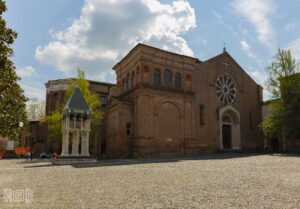Did you know that in the historic center of Bologna there is an area called Quadrilatero? Come and discover its history with us!
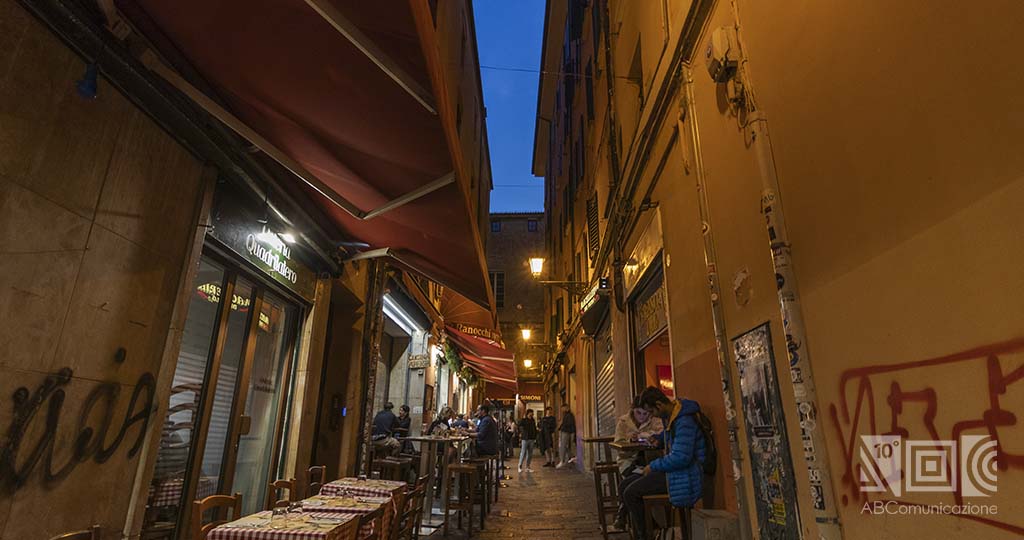
History
The Quadrilatero is a central area of Bologna, enclosed between St. Rizzoli, St. dell’Archiginnasio, St. Farini and St. Castiglione: it is precisely its shape that gives it its name.
Its history begins in the Middle Ages, when citizens met in the streets inside the Quadrilatero to talk, shop and eat. This area was in fact home to numerous artisans, shops, taverns and fishmongers that can still be found today. It is thanks to these shops that the streets have their current name, such as St. Pescherie Vecchie or St. Orefici.
Inside the Quadrilatero there are also the buildings that have created the history of Bologna: Palazzo Pepoli Campogrande, where Charles V was crowned and where Napoleon Bonaparte took up residence; the Archiginnasio, the initial seat of the Bologna Studio (find out more in the article Bologna: the oldest university of the Western world); the Osteria del Sole, the oldest tavern in Bologna (see also The five best taverns and trattorie in Bologna: from the 15th century to now).
In 1889, numerous historic streets, including St. Pelliccerie and St. Spaderie, disappeared due to the first General Town Plan of Bologna which provided for the widening of some roads, the construction of new ones and the demolition of the walls surrounding Bologna.
Curiosity about Quadrilatero market
Music is present also in the Quadrilatero: in 2011 St. Caprarie was named “Street of jazz” thanks to the immense musical culture that Bologna offered and still offers today. Furthermore, walking through the streets, there are plaques and stars dedicated to Italian and foreign artists who have held concerts in Bologna. Find out more about the close link between Bologna and music in the article Bologna: city of music.
And again, inside the Quadrilatero was born the first large hospital in Bologna, that of S. Maria della Vita, built in 1287 on the initiative of the Compagnia dei Battuti which was inspired by the preaching of Raniero Fasani from Perugia. The Ospedale della Vita chose the care and care vocation, becoming the most important hospital in the city: over the centuries it incorporated other hospitals and their related assets. The increased importance of the hospital led the Municipality to identify an area to build a new and larger one: on 2 June 1725 the new Hospital of Life was opened in St. Riva Reno, which operated until it was hit and destroyed from the bombings of the Second World War.
Even the Aposa, a stream coming from Vicolo San Damiano, over the centuries has played an important role in the equilibrium of the Quadrilatero, offering its own waters and receiving the dirty ones through a dense network of sewers.
In addition, inside the Quadrilatero there is one of the historical and important buildings of Bologna: The Basilica of San Petronio, located in the beautiful Piazza Maggiore, characterized by its bi-chromatism of the facade. Another particular curiosity is also found in the Cathedral of San Pietro: there is, inside the bell tower, one of the largest “playable Bolognese” bells, run to find out what this term means!
Inside the Quadrilatero there are 7 historic shops that you absolutely cannot miss! Read on to find out what they are.
Farmacia della Santissima Annunziata
In St. Orefici 17 you can still see the shop which, in the XVI century, was built as “Spezieria San Giorno” and then renamed “Dell’Annunciata”.
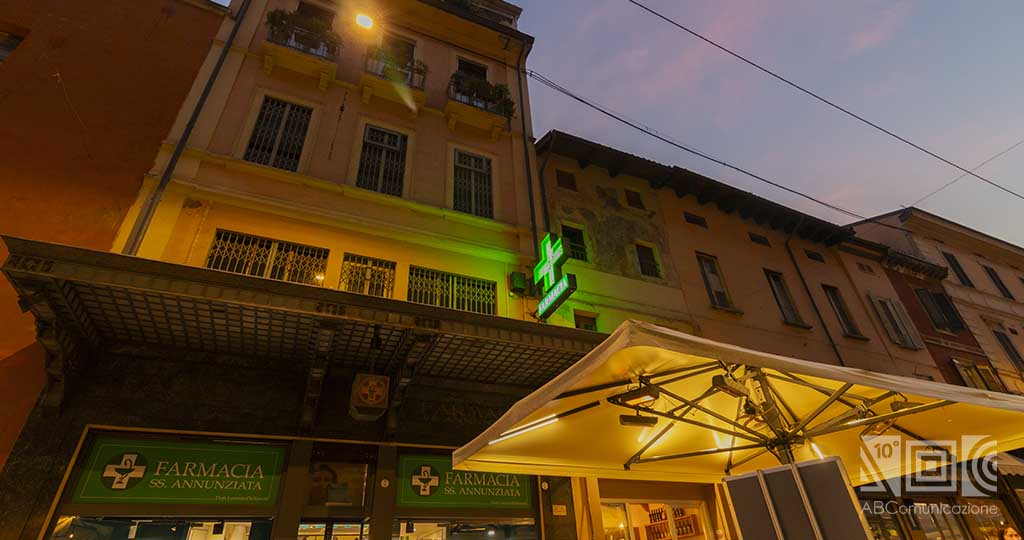
The pharmacy of the Santissima Annunziata is recognizable thanks to an iron canopy and a liberty-style pediment placed outside. Today the business is handed down from year to year by the same family.
The name of the ancient pharmacy derives from the terracotta tile depicting the Annunciation, which can be seen on the corner with St. Drapperie, right above the sculpture that commemorates Father Marella. Here, in fact, where the Salumeria Tamburini is now, the pharmacy was located since the end of the XVI century.
In a corner of the Quadrilatero, at the end of Via Rizzoli, there is one of the most important symbols of Bologna: Le Due Torri, one of which can still be visited and will offer you a view of the city that you will not forget. Run and visit them! From the Two Towers you can also see the Sanctuary of Our Lady of San Luca, with the longest porch in the world!
Osteria del Sole
The Osteria del Sole is one of the oldest taverns in Bologna and is located in Vicolo Ranocchi 1. It was a meeting place for Bolognese citizens and still today it is possible to sit at the table and try the typical wines of the area.

If you want to know more about the Osteria del Sole, do not miss the article “The five best taverns and trattorie in Bologna: from the 15th century to now“.
Just 500 meters from the Osteria del Sole, between Via Zamboni, Via Oberdan and Via Marsala, there is the Ancient Jewish Ghetto of Bologna, a place full of memory and history with colors and captivating views.
Salsamenteria Tamburini
The history of this shop begins in 1860 when the owners were the Benni, administrators of the estate of Prince Baciocchi, husband of Elisa Bonaparte.
It was they who installed the pulleys and rails to hang the half carcasses in the shop: the whole process of working the cattle took place in the shop. In 1973, however, this practice was suspended, although it is still possible to see the tools that were used in the sauce shop.
It was only in 1907 that the Tamburini brothers, eight to be precise, arrived in Bologna and began working at this shop: these were the golden years for the Emilian culinary tradition.
In 1932, the last member of the Benni family decided to sell the shop to the Tamburini brothers, who run the company with great success.
A four-minute walk from the shop, there is one of the places with more legends and historical events related to them: The Basilica of Santo Stefano. And not only that, this complex also houses one of the most important crypts in Bologna: the Crypt of Santo Stefano. A stone’s throw from the complex, is San Giovanni in Monte: did you know that this building has passed from a convent to a prison and now houses the University? If you are curious about this place rich in history, read our article on San Giovanni in Monte.
Paolo Atti e Figli
Paolo Atti e Figli’s shop was born in 1868, in St. Drapperie 6: with its long history, it has become a symbol of Bologna.
Thanks to the success given by the constant search for the quality of raw materials, the Atti family managed to open a second shop in St. Caprarie, around 1900. Another success is given by the inclusion of the shop in the Association of Historical Places of Italy.
At Paolo Atti e Figli it is possible to find fresh bread every day, but also sweets and savory products, along with numerous other items. In particular, the tortellini of Atti are famous, so, if you want to deepen the gastronomic tradition of Emilia, read our article Pasta fresca a Bologna: l’arte delle sfogline, and discover where to eat in the city! In addition, there are countless women who have made the history of Bologna: from university to artistic and, again, cycling. Read the article on Women who have made the history of Bologna.

Salumeria Simoni
Inside the Quadrilatero there has been, since 1960, the Salumeria Simoni. The goal of the Simoni family was to create a specialized shop, with home-grown fresh pasta, artisan cured meats and selected cheeses.
The young Simoni are today the fourth generation of the family to carry on the tradition; they not only deal with the shop, but are also very active in the social area of the city. For example, they have tried to relaunch mortadella, a typical Bolognese product, on the market through a collaboration with the protection consortium; in addition, they are trying to revive the ancient corporation of Bolognese delicatessen owner, that is the Mutual Aid Society among Salsamentari established in 1870.
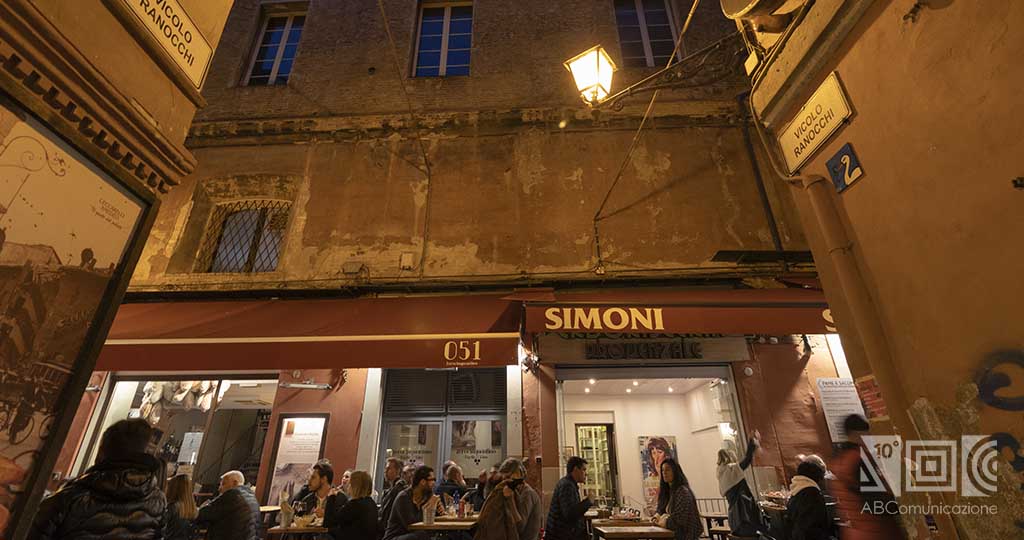
Pescheria Brunelli
The Quadrilatero was also the place for fishmongers: the fish trade in the shops was concentrated in St. Pescherie at the end of the 16th century. Until then, fish resales were considered a “nomadic” activity, as no one wanted that smelly proximity. The points of sale were called “buse” (holes) because they had dug spaces where the goods were kept.
Pescheria Brunelli has its roots in 1924 as a fryer and in 1947 as a fish market: today it is located in St. Drapperie 8.
Its history was born thanks to the Brunelli family, the founder, and continues thanks to a new management that carries on this historic shop.
Every day it is possible to find high quality fresh fish from the Adriatic Sea, together with some products already prepared in the laboratory of San Lazzaro.
In addition, the Brunelli fishmonger has been included in the list of historical shops of tradition and value in the metropolitan city of Bologna.
La Bottega del Caffè
Finally, another historic shop in the Quadrilatero is La Bottega del Caffè, established in 1994 in St. Orefici 6.
The Filicori family’s passion for the production of coffee was born in 1919 by setting up a few years later the first artisan coffee roasting site in St. Oberdan, until 2001 when the Espresso Laboratory was established: a school that teaches the values and secrets of craft. Do not miss the other numerous shops in the Quadrilatero: visit it and immerse yourself in the narrow streets with unforgettable scents and colors!
It is said that the Quadrilateral also represents the Circle of Selenite, part of the Defensive Walls of Bologna, still present around the city. Also, a stone’s throw from the Porta San Donato, is the Botanical Garden of Bologna: did you know that among the oldest gardens in Europe? Go and find out: today it is managed by the University of Bologna!
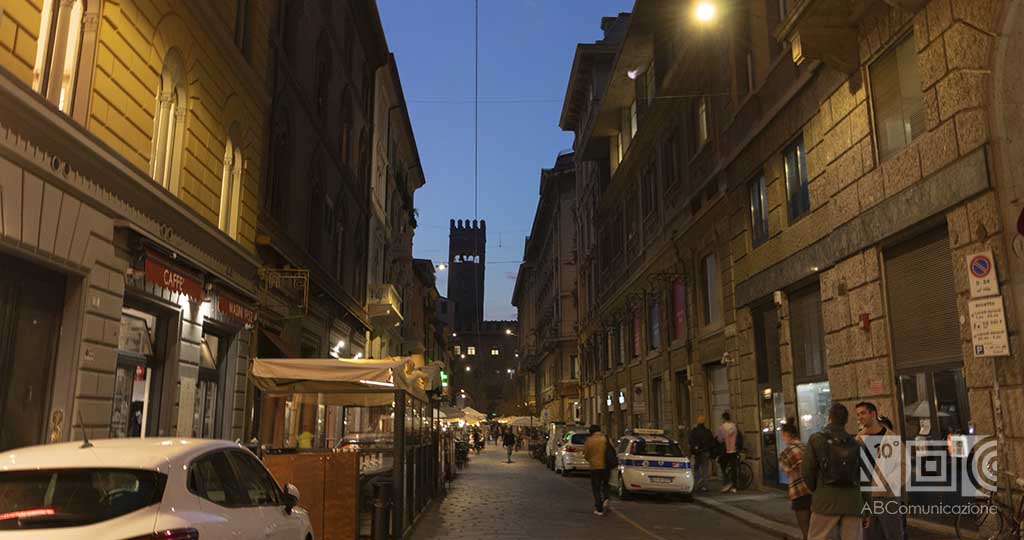
Bibliografia
- Costa T., Poli M., Il Quadrilatero cuore antico di Bologna, Bologna, Costa editore, 2005.
- Cremonini G., Il cuore quadrato di Bologna, Bologna, Pendragon, 2015.
- Grossi L., Le antiche botteghe della città di Bologna: il Quadrilatero, Bologna, Studi Locali Adulti, 2002.
- La Repubblica, Bologna quadrilatero. Quartiere Italia. Le guide ai sapori e ai piaceri, Roma, Gedi, 2021.
- Maini G., Quadrilatero: l’antico cuore di Bologna scomparso, Bologna, Studi Locali Adulti, 2007.




